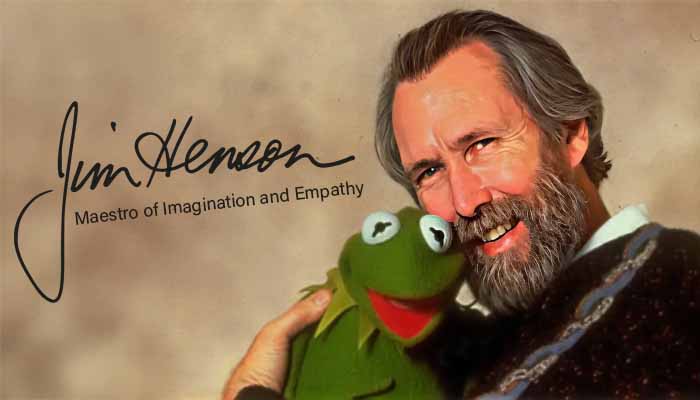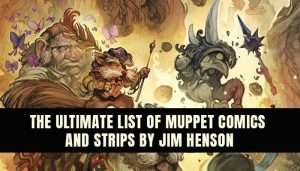Jim Henson’s creations are an indelible part of global popular culture, spanning the educational landscape of “Sesame Street,” the vibrant stage of “The Muppet Show,” and the intricate fantasy realms of “The Dark Crystal” and “Labyrinth.” His influence transcends mere entertainment, touching generations across diverse genres and media. Jim Henson was more than a puppeteer; he was a visionary artist, an educational pioneer, and a technological innovator whose profound impact on entertainment, education, and human connection continues to resonate worldwide. His enduring legacy is defined by his unique blend of humor, heart, and groundbreaking creativity.
Henson’s early fascination with television proved to be a pivotal factor in shaping his unique approach to puppetry. He recognized the immense potential of this new medium, moving the art form beyond the traditional confines of a stage and into the intimate, immediate space of the screen. This understanding led him to fundamentally rethink puppet design and performance. Instead of merely adapting existing stage puppets, he innovated specifically for the camera, developing the distinctive “Muppet” style. This forward-thinking perspective allowed for close-ups and more nuanced expressions, fundamentally transforming how puppetry could engage an audience. His foresight in leveraging new technology for artistic and communicative purposes established him as a pioneer in media, setting a precedent for future visual storytelling.
The Genesis of Imagination: From “Sam and Friends” to the Birth of the Muppets
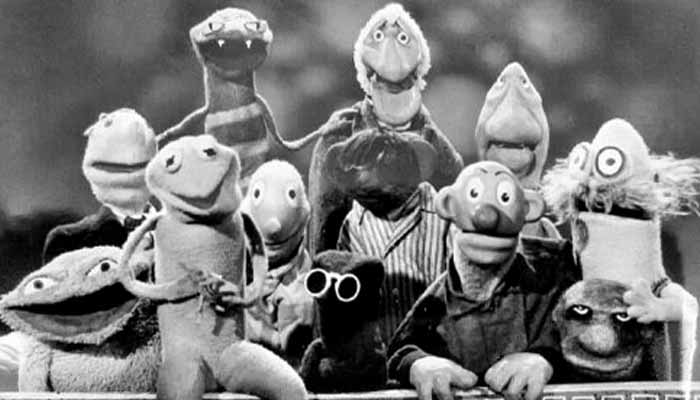
Jim Henson’s extraordinary journey into the world of puppetry began during his college years at the University of Maryland in Washington, D.C.. Alongside his future wife, Jane Nebel, he launched “Sam and Friends,” a nightly five-minute puppet show that aired on NBC’s local affiliate, WRC-TV, from 1955 to 1961. This early venture was remarkably innovative for its time, earning Henson his first Emmy Award in 1958.
It was within the experimental framework of “Sam and Friends” that the very first “Muppets” came to life. Henson himself coined the term “Muppets,” a portmanteau combining “marionettes” and “puppets,” to describe his unique creations. These figures represented a significant departure from traditional puppets, being meticulously crafted from flexible materials such as sculptured foam rubber, plastic, and various fabrics. This innovative material choice allowed for a far greater range of expression and movement compared to puppets made from harder, more rigid materials. The design often involved hand puppets or fully costumed persons, with complex characters sometimes requiring the coordinated efforts of multiple puppeteers to achieve lifelike motion and expression.
The now-iconic Kermit the Frog made his debut on “Sam and Friends”. Initially, Kermit was conceived as a lizard-like character, ingeniously fashioned by Henson in 1955 from his mother’s old spring coat and a pair of his blue jeans, with ping-pong balls serving as eyes. Kermit’s appearance evolved over time, transforming into the familiar frog we recognize today around 1963, a change prompted by the increasing prevalence of color television. This evolution of Kermit, from a “lizard-like character” to a “frog” and the subsequent shift to a brighter green for color television, demonstrates Henson’s remarkable adaptability and responsiveness to the evolving media landscape and audience perception. He was not rigid in his artistic creations; instead, he refined them both aesthetically and functionally to suit the medium. The inherent flexibility of materials like foam and fabric in Muppet construction allowed for this continuous refinement, enabling characters to adapt with technological advancements and audience feedback. This iterative design process was fundamental to the enduring appeal and longevity of the Muppets. Another early and popular character was Rowlf the Dog, who gained national recognition through Purina dog chow commercials and frequent appearances on “The Jimmy Dean Show”.
Educating Generations: The Sesame Street Revolution
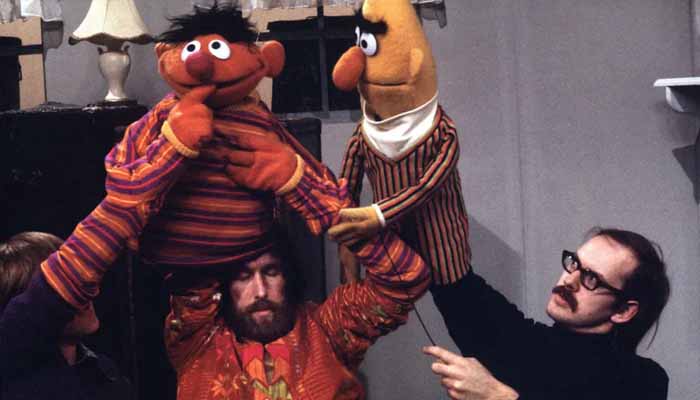
In 1969, Jim Henson and his Muppets achieved widespread national popularity with the premiere of “Sesame Street”. This groundbreaking children’s television program, developed by the Children’s Television Workshop (now known as Sesame Workshop), was specifically designed to address the educational needs of preschool children, particularly those from underprivileged backgrounds.
“Sesame Street” pioneered a revolutionary concept: “edutainment,” seamlessly blending entertainment with educational content. It utilized fast-paced segments featuring a beloved cast of characters, including Big Bird, Oscar the Grouch, Elmo, Bert, Ernie, and Cookie Monster, to teach foundational skills in reading and mathematics. The show cleverly integrated “commercials” dedicated to teaching the alphabet and numbers from one to ten.
“Sesame Street” was not merely an entertaining children’s program; it was a deliberate, research-driven social experiment conceived to address the societal upheaval of the 1960s. Its creators, blending the expertise of educators, psychologists, and television producers, consciously aimed to leverage television as a powerful tool for social good and educational equity. The show quickly garnered critical acclaim, accumulating numerous awards and attracting a remarkably diverse audience. By the end of its first decade, an impressive nine out of ten preschoolers, representing equal percentages of minority and white children, were reportedly watching the program. Field research provided compelling evidence that “Sesame Street” viewers experienced smoother transitions into school and were better prepared for reading and learning numbers compared to non-viewers. The compelling data demonstrating that preschool children were capable of learning from visual media at previously “unbelievable rates” challenged existing professional educational and psychological concepts of childhood development. This success brought new respectability to studies of television’s impact on children and elevated the prestige of those involved in children’s television programming. Furthermore, the show’s inclusive representation and consistent focus on social themes, such as race, ethnicity, gender roles, and social relationships, significantly contributed to its cultural relevance and lasting impact. “Sesame Street” has been recognized as an “enduring example of a scalable and effective early childhood educational intervention,” with international co-productions continuing to aid children’s learning across the globe. Henson’s involvement in “Sesame Street” thus elevated puppetry from a simple form of entertainment to a profound instrument for social change and educational reform, illustrating the deep influence media can wield when intentionally designed for positive societal outcomes.
Beyond the Classroom: The Global Phenomenon of The Muppet Show
Following the immense success of “Sesame Street,” Jim Henson began to feel he was becoming typecast as solely a children’s entertainer. Driven by an artistic ambition to diversify his work and reach a broader demographic, he conceived “The Muppet Show,” a variety sketch comedy series designed to appeal to a more adult audience. The show premiered in 1976.
Despite facing initial rejections from networks in the United States, “The Muppet Show” found an enthusiastic champion in British producer Lew Grade, who agreed to co-produce the series in England at ATV Studios in London. This strategic international partnership proved to be a pivotal decision, propelling the show to phenomenal global success. “The Muppet Show” rapidly gained an international audience, broadcasting in over 100 countries and reaching an estimated 235 million viewers weekly by its third season. Henson’s deliberate pivot from purely children’s entertainment to a “more adult audience” with “The Muppet Show” reveals his artistic ambition to diversify and avoid typecasting, showcasing his versatility as a creator. This move was not merely a creative whim but a strategic decision to broaden his artistic scope and commercial appeal. The show’s distinctive blend of “burlesque nature, slapstick, sometimes absurdist and surreal humour, and parodies,” coupled with its variety show format featuring celebrity guest stars, was specifically crafted to attract a wider demographic. This demonstrated his remarkable ability to craft content that transcended age barriers, solidifying his reputation as a multifaceted entertainment visionary.
“The Muppet Show” was celebrated for its uniquely designed characters, its blend of burlesque and slapstick, and its often absurdist and surreal humor. Kermit the Frog served as the ever-beleaguered host and showrunner, striving to maintain order amidst the chaotic antics of characters such as the flamboyant Miss Piggy, the perpetually punning Fozzie Bear, the wild Animal, and the eccentric Gonzo. The show’s immense popularity attracted numerous celebrities who were eager to perform alongside the Muppets. Beyond the laughter, the series subtly promoted core values, including humor, teamwork, and inclusivity, illustrating how collaboration and celebrating individual differences can lead to collective success. The widespread popularity of “The Muppet Show” naturally extended to the big screen, leading to a series of successful feature films, including “The Muppet Movie” (1979), “The Great Muppet Caper” (1981), and “The Muppets Take Manhattan” (1984).
Worlds of Wonder: Fantasy Films and Deeper Narratives
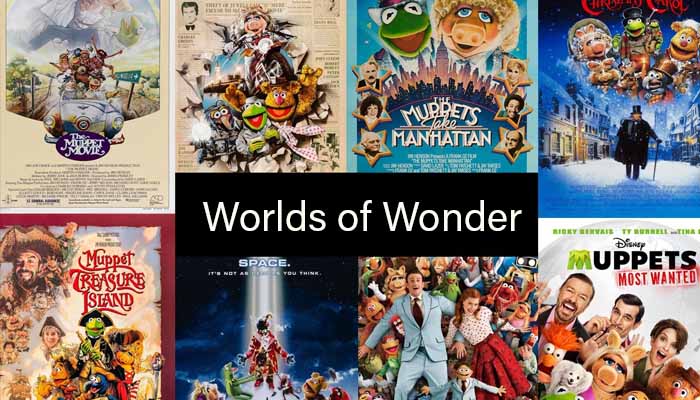
In the 1980s, Jim Henson embarked on a new artistic direction, venturing into darker, more ambitious fantasy filmmaking. These projects moved beyond the familiar Muppets, allowing him to create entirely unique worlds populated by intricate puppet-like figures. These films underscored his profound commitment to puppetry as a serious art form, demonstrating its capacity for deep emotional expression and significant technological innovation.
One such endeavor was “The Dark Crystal,” co-directed by Henson and released in 1982. This film was a deeply personal project for Henson. Its development spanned five years, requiring the collaborative talents of scores of designers, builders, technicians, and performers from across the globe. Henson deliberately crafted “The Dark Crystal” to be “very dark and very scary,” pushing the boundaries of puppetry to create a “phenomenal showcase of puppetry and animatronics” that demanded new kinds of three-dimensional characters with advanced movement capabilities. The shift to “darker” and more complex fantasy films like “The Dark Crystal” and “Labyrinth” represents a significant artistic evolution for Henson. This was not merely a change of pace but a deliberate artistic challenge. Henson sought to demonstrate that puppetry could convey profound emotional expression and complex narratives, thereby expanding the art form’s perceived capabilities and the audience’s understanding of its potential. The establishment of Jim Henson’s Creature Shop was a direct response to the need for advanced animatronics required for these ambitious films, further illustrating his unwavering commitment to his artistic vision.
Following “The Dark Crystal,” Henson directed “Labyrinth,” released in 1986. Produced by George Lucas and starring David Bowie and Jennifer Connelly, this film presented a different fantastical narrative. Henson intended “Labyrinth” to be a “lighter weight picture” than its predecessor, incorporating more comedy and character interaction. The narrative explores the complex themes of a young girl’s transition from childhood to adulthood and her journey to embrace responsibility. Like “The Dark Crystal,” “Labyrinth” heavily relied on intricate puppets and animatronic creatures, meticulously built by Jim Henson’s Creature Shop. These films collectively cemented Henson’s reputation as a serious filmmaker and a master of visual storytelling, influencing subsequent fantasy cinema and demonstrating the enduring versatility of practical effects in an increasingly digital industry.
Harmony and Hope: The Philosophy of Fraggle Rock
“Fraggle Rock,” which premiered in 1983, represented another significant facet of Jim Henson’s creative output. This television series was developed with an ambitious and explicit goal: to promote “world peace” and “international understanding”. Conceived and broadcast during a period of considerable global upheaval and Cold War tensions, Henson aimed to present a “more positive reality to children”.
The series masterfully explored themes of mutual understanding, diversity, empathy, and community. It depicted various distinct creature communities—the carefree Fraggles, the industrious Doozers, and the blundering Gorgs—who, despite their differences and occasional conflicts, were ultimately interdependent. The overarching message conveyed was that “we all rely on each other and we can coexist in harmony”. “Fraggle Rock” was not merely a children’s show but a deeply philosophical and politically conscious work, reflecting Henson’s personal commitment to global harmony and his profound belief that entertainment could serve as a powerful vehicle for social commentary and change. Henson, having “come of age at the height of 20th-century upheaval,” consciously designed a narrative that promoted “tolerance” and “interdependence”. This demonstrated his evolution from creating purely entertaining or educational content to using his platform for explicit peace-building, showcasing a profound sense of social responsibility.
“Fraggle Rock” was specifically designed with an international audience in mind. Its message of conflict resolution achieved through song and laughter, rather than through hawkish nationalism, resonated deeply across cultures. The show consistently emphasized notions of community, environmentalism, and the enduring importance of maintaining hope, even in challenging times. “Fraggle Rock” stands as a powerful testament to the potential of media to foster empathy and bridge cultural divides, proving that even seemingly simple children’s programming can carry profound and timely messages relevant to global challenges.
Innovator and Visionary: Technical Advancements in Puppetry
Jim Henson’s genius extended far beyond character creation; he was a relentless innovator in the field of puppetry and visual effects. His early innovations revolutionized puppetry for television, notably by eliminating the traditional puppet stage and instead utilizing the television screen itself as the proscenium. He pioneered the use of soft, flexible materials like foam and fabric, which allowed for far more expressive and dynamic puppets compared to the rigid materials previously common in traditional puppetry. He also developed sophisticated performance techniques, such as “hand-rod Muppets” and “live-hand Muppets,” which often required the coordinated efforts of multiple puppeteers to achieve complex characterizations, enabling nuanced expressions and the ability to grasp objects.
A particularly crucial innovation was the “monitor feedback system,” a closed-circuit television setup that allowed puppeteers to see precisely what the home viewer saw. This technological advancement was transformative, enabling characters to make direct eye contact and speak directly to the camera, thereby fostering a more intimate and immediate connection with the audience.
In 1979, Henson founded Jim Henson’s Creature Shop, which quickly became a world leader in animatronics and special effects. This workshop was instrumental in the creation of the complex characters for films like “The Dark Crystal” and “Labyrinth,” pushing the boundaries of puppet movement, realism, and overall visual storytelling. The Creature Shop’s commitment to research, experimentation, and craftsmanship allowed it to remain at the cutting edge of effects innovation.
Further advancements included the development of the “Henson Performance Control System” (HPCS), which utilized radio control to enable highly nuanced expressions and realistic movement in characters of any size or shape. This groundbreaking system earned an Academy Award in 1992. Henson also explored early forms of computer-generated puppet characters and digital animation, laying the groundwork for what would evolve into the Emmy Award-winning “Henson Digital Puppetry Studio” after his passing. Henson’s brilliance resided not only in his artistic creations but also in his dual capacity as an artist and entrepreneur. He consistently invested in and pushed technological boundaries to realize his imaginative visions, thereby establishing new industry standards. He understood that achieving his artistic ambitions necessitated continuous technological innovation. He actively cultivated a workshop environment, Jim Henson’s Creature Shop, dedicated to rigorous research, experimentation, and unparalleled craftsmanship. This proactive approach to research and development, combined with his unwavering artistic drive, allowed him to accomplish previously unimaginable feats in puppetry and special effects, making him a unique figure who seamlessly bridged the gap between creative vision and technical execution. His legacy therefore extends beyond beloved characters to foundational contributions in media technology, demonstrating how artistic vision can powerfully drive technological progress and vice versa, influencing not just puppetry but the broader special effects industry.
Table: Jim Henson’s Technical Innovations in Puppetry
| Innovation/Technique | Description | Impact on Puppetry/Filmmaking | Key Productions Where Used |
| Foam/Fabric Puppetry | Use of soft, flexible materials like foam rubber and fabric for puppet construction. | Allowed for more expressive, pliable, and dynamic puppets compared to traditional rigid materials. Enabled greater range of motion and subtle emotional cues. | “Sam and Friends,” “Sesame Street,” “The Muppet Show” |
| Hand-Rod & Live-Hand Muppets | Techniques where puppeteers use one hand in the puppet’s head and the other to operate arms via rods (hand-rod) or directly (live-hand, often requiring a second puppeteer). | Increased expressiveness, allowed for complex movements and interaction with objects, and enabled more lifelike characterizations. | “The Muppet Show,” “Sesame Street” |
| Monitor Feedback System | A closed-circuit TV system allowing puppeteers to see the camera’s view in real-time. | Revolutionized television puppetry by enabling direct eye contact with the camera, creating a more intimate connection with the audience. | “Sesame Street,” “The Muppet Show” |
| Animatronics & Creature Shop | Development of sophisticated mechanical puppets and the establishment of Jim Henson’s Creature Shop. | Pushed boundaries of realism and complex movement for non-Muppet characters, enabling intricate fantasy worlds. Set industry standards for creature effects. | “The Dark Crystal,” “Labyrinth,” “Dinosaurs” |
| Henson Performance Control System (HPCS) | Radio-controlled animatronic puppet system. | Enabled highly nuanced expressions and realistic movement for characters of any size, removing physical cables. Awarded an Academy Award. | “Fraggle Rock” (development), “The Dark Crystal,” “Labyrinth” (advanced use) |
| Digital Puppetry Studio | Early exploration and later development of real-time digital animation controlled by puppeteers via motion-capture rigs. | Bridged practical puppetry with digital effects, allowing for spontaneous, expressive animated characters. Earned Emmy Award. | Post-Henson projects, including “Sid the Science Kid” |
The Heart of Henson: Enduring Themes and Values
Beyond the sheer entertainment value, Jim Henson’s body of work consistently explored profound philosophical messages, reflecting his conviction that both children and adults were capable of grappling with deep and meaningful questions. This consistent embedding of profound philosophical and social themes across his diverse body of work indicates a deliberate and deeply held personal ethos, rather than merely commercial aims. He genuinely believed in the transformative power of media for moral and intellectual development.
Several core themes recur throughout his productions:
- Community and Interdependence: This theme is particularly prominent in “Fraggle Rock,” where diverse groups of creatures learn to coexist and recognize their mutual reliance, illustrating that different communities can thrive together.
- Diversity and Inclusivity: Henson celebrated diversity through the varied cast of characters across all his productions. His work consistently conveyed the message that “everyone has a place and can contribute in their own way,” regardless of their unique traits or quirks. “Sesame Street,” for instance, explicitly addressed issues of race and ethnicity, fostering an environment of acceptance.
- Imagination and Creativity: Henson’s work consistently championed imagination and creativity as vital pathways to problem-solving and self-expression. He himself was a master at transforming fantastical imagination into tangible reality.
- Empathy and Understanding: A cornerstone of his creative philosophy, Henson’s narratives consistently fostered compassion and mutual respect among characters and, by extension, among his audience.
- The Power of Play and Joy: Henson believed that “Life is meant to be fun, and joyous, and fulfilling”. Humor was a constant, vibrant presence in his work, used not only to entertain but also to subtly teach the importance of laughter and resilience, even when facing difficulties.
- Identity and Self-Discovery: Narratives such as “Labyrinth” delve into a young protagonist’s journey of maturation, self-discovery, and the acceptance of responsibility, reflecting the complexities of growing up.
- Environmentalism: Themes related to environmental awareness and the importance of caring for one’s shared world were subtly touched upon, particularly within “Fraggle Rock”.
Henson’s quote, “[Kids] don’t remember what you try to teach them. They remember what you are,” suggests his belief in leading by example through the characters and narratives he created. This moral compass distinguishes his work from purely commercial entertainment, imbuing it with lasting significance. The iconic song “The Rainbow Connection,” performed by Kermit the Frog, beautifully encapsulates Henson’s optimistic worldview, emphasizing hope, wonder, and the pursuit of dreams. It encourages listeners to “suspend disbelief and remember what wishing on a star can accomplish,” a timeless anthem to the enduring power of imagination and belief.
Table: Key Jim Henson Productions and Their Impact
| Production Name | Type | Key Characters/Focus | Primary Impact/Theme | Notable Dates |
| “Sam and Friends” | TV Series | Kermit, Sam, Yorick, Harry the Hipster | Early TV puppetry innovation, development of the first Muppets, Emmy win. | 1955-1961 |
| “Sesame Street” | TV Series | Big Bird, Kermit, Oscar the Grouch, Elmo, Bert, Ernie, Cookie Monster | Revolutionized children’s educational television (“edutainment”), taught foundational skills, promoted social themes, global reach. | 1969-present |
| “The Muppet Show” | TV Series | Kermit, Miss Piggy, Fozzie Bear, Animal, Gonzo | Global variety entertainment, appealed to all ages, showcased celebrity guests, promoted teamwork and inclusivity. | 1976-1981 |
| “The Muppet Movie” | Feature Film | Kermit, Miss Piggy, Fozzie Bear | First major Muppet feature film, critical and commercial success, expanded Muppet universe to cinema. | 1979 |
| “The Dark Crystal” | Feature Film | Jen, Kira, Skeksis, Mystics | Ambitious, darker fantasy storytelling using advanced animatronics and puppetry, explored complex themes. | 1982 |
| “Fraggle Rock” | TV Series | Fraggles, Doozers, Gorgs, Doc, Sprocket | Promoted world peace and international understanding, emphasized interdependence, diversity, and environmentalism. | 1983-1987 |
| “Labyrinth” | Feature Film | Sarah, Jareth the Goblin King, Hoggle, Ludo | Fantasy adventure exploring themes of coming-of-age and responsibility, showcased advanced puppetry and animatronics. | 1986 |
| “The Storyteller” | TV Series | The Storyteller, Dog | Revitalized classic folk tales and myths with advanced puppetry and visual effects, explored ancient traditions. | 1988-1990 |
| “Dinosaurs” | TV Series | Sinclair Family | Groundbreaking use of animatronics for a family sitcom, explored social commentary through anthropomorphic dinosaurs. | 1991-1994 |
| “Muppet*Vision 3D” | Theme Park Attraction | Kermit, Miss Piggy, Waldo C. Graphic | Jim Henson’s final directorial project, innovative use of 3D film and in-theater practical effects. | 1991 (opened posthumously) |
A Legacy Continued: Preservation and Future Influence
The profound impact of Jim Henson’s work did not cease with his untimely passing in 1990. His creative vision and contributions continue to be preserved and perpetuated through the dedicated efforts of several key organizations. The Jim Henson Company, established by Jim and Jane Henson in 1958, remains independently owned and operated by their children. While certain properties, such as the core Muppets and “Bear in the Big Blue House,” were sold to Disney in 2004 , The Jim Henson Company retains ownership of the renowned Creature Shop and its extensive film and television library, which includes beloved titles like “Fraggle Rock,” “Farscape,” “The Dark Crystal,” and “Labyrinth”.
The Jim Henson Foundation, founded by Jim Henson himself in 1982, plays a crucial role in promoting and developing the art of puppetry in the United States. As the sole grant-making institution with this specific mission, it serves as a major advocate and resource for puppet artists. The Foundation awards grants annually for the creation of innovative new works of contemporary puppet theater, explicitly supporting artists who develop their own unique styles, distinct from the established “Muppet style”. This focus ensures that Henson’s spirit of innovation within the art form continues to flourish, rather than merely fostering imitation of his existing characters.
Further safeguarding his artistic contributions is The Jim Henson Legacy, an organization created in 1992 by Henson’s family and friends. Its mission is dedicated to preserving and perpetuating his vast contributions to puppetry, television, motion pictures, special effects, and media technology. The Legacy actively makes Henson’s creative body of work accessible to the public through various presentations and exhibits, ensuring that the power of his art, his imagination, and his positive outlook on life can be shared with generations to come. The deliberate establishment of The Jim Henson Company, The Jim Henson Foundation, and The Jim Henson Legacy demonstrates a proactive, multi-pronged strategy by his family and collaborators to ensure his artistic vision and contributions endure far beyond his lifetime. This is not merely passive remembrance but an active, structured effort to maintain control over his intellectual property, foster new talent in his creative spirit, and ensure public access to his historical contributions. This structured approach to legacy management provides a powerful model for how the work of influential artists can be perpetuated and remain relevant across generations.
Henson’s profound influence continues to inspire new generations of artists and audiences worldwide. His enduring impact has been recognized through numerous posthumous honors, including a star on the Hollywood Walk of Fame in 1991, induction into the Television Hall of Fame in 1987, and being named a Disney Legend in 2011. Documentaries, such as Ron Howard’s “Jim Henson Idea Man” (2024), continue to explore and celebrate his remarkable life and work. Even his final project, the innovative “Muppet*Vision 3D” attraction, continued to charm audiences for decades, a testament to the lasting appeal of his creative genius.
Conclusion: The Timeless Tapestry of Jim Henson’s Dream
Jim Henson’s legacy is a vibrant tapestry woven from threads of boundless imagination, pioneering innovation, and a deep-seated belief in the power of empathy and human connection. He did not merely create puppets; he created entire worlds that served to teach, entertain, and inspire. From the educational breakthroughs of “Sesame Street,” which transformed early childhood learning, to the global phenomenon of “The Muppet Show,” which captivated audiences of all ages, and the profound artistry of his fantasy films like “The Dark Crystal” and “Labyrinth,” Henson’s work remains timeless. His spirit continues to serve as a powerful reminder that creativity knows no bounds, and that even the simplest materials, when imbued with heart, vision, and a commitment to positive values, possess the capacity to change the world. His iconic “Rainbow Connection” continues to call to the “lovers, the dreamers, and me,” a poignant testament to a legacy that will forever live on in our collective imagination.

